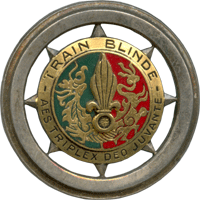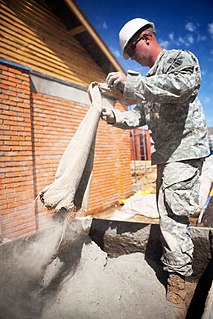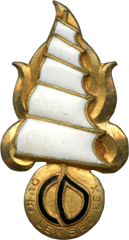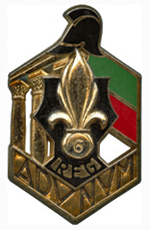| Armored Train of the Foreign Legion Train blindé de la Légion étrangère | |
|---|---|
 | |
| Active | 1948 - 1954 |
| Country | |
| Allegiance | |
| Branch | |
| Size | 100 |
| 7 Flames Grenade & Golden Eastern Dragon & Rail | Train Blindé( fr) Armored Train Aes Triplex Deo Juvante ( La ) Triple airain, Dieu aidant( fr ) Triple Alloy, God Aiding |
| Engagements | First Indochina War |
The Armored Train of the Foreign Legion (French : Train blindé de la Légion étrangère) was an Armoured train (French : trains blindés ) detachment of the French Foreign Legion formed in Tonkin. In 1948, the 2nd Foreign Regiment 2e RE, formed one, then two armored trains to protect convoys from attack ambushes by the Vietminh, protect the Transindochinois Line (French : Line du Transindochinois ) and roll support the Army along its chartered course. During this époque, the Legion formed several armored trains, which were mounted by the 1st Foreign Cavalry Regiment 1er REC and other Legion units.

French is a Romance language of the Indo-European family. It descended from the Vulgar Latin of the Roman Empire, as did all Romance languages. French evolved from Gallo-Romance, the spoken Latin in Gaul, and more specifically in Northern Gaul. Its closest relatives are the other langues d'oïl—languages historically spoken in northern France and in southern Belgium, which French (Francien) has largely supplanted. French was also influenced by native Celtic languages of Northern Roman Gaul like Gallia Belgica and by the (Germanic) Frankish language of the post-Roman Frankish invaders. Today, owing to France's past overseas expansion, there are numerous French-based creole languages, most notably Haitian Creole. A French-speaking person or nation may be referred to as Francophone in both English and French.

An armoured train is a railway train protected with armour. Armoured trains usually include railroad cars armed with artillery and machine guns. They were mostly used during the late 19th and early 20th century, when they offered an innovative way to quickly move large amounts of firepower. Most countries discontinued their use – road vehicles became much more powerful and offered more flexibility, and train tracks proved too vulnerable to sabotage as well as to attacks from the air. However, the Russian Federation used improvised armoured trains in the Second Chechen War of 1999–2009.

The French Foreign Legion is a military service branch of the French Army established in 1831. Legionnaires are highly trained infantry soldiers and the Legion is unique in that it was, and continues to be, open to foreign recruits willing to serve in the French Armed Forces. When it was founded, the French Foreign Legion was not unique; other foreign formations existed at the time in France.




















